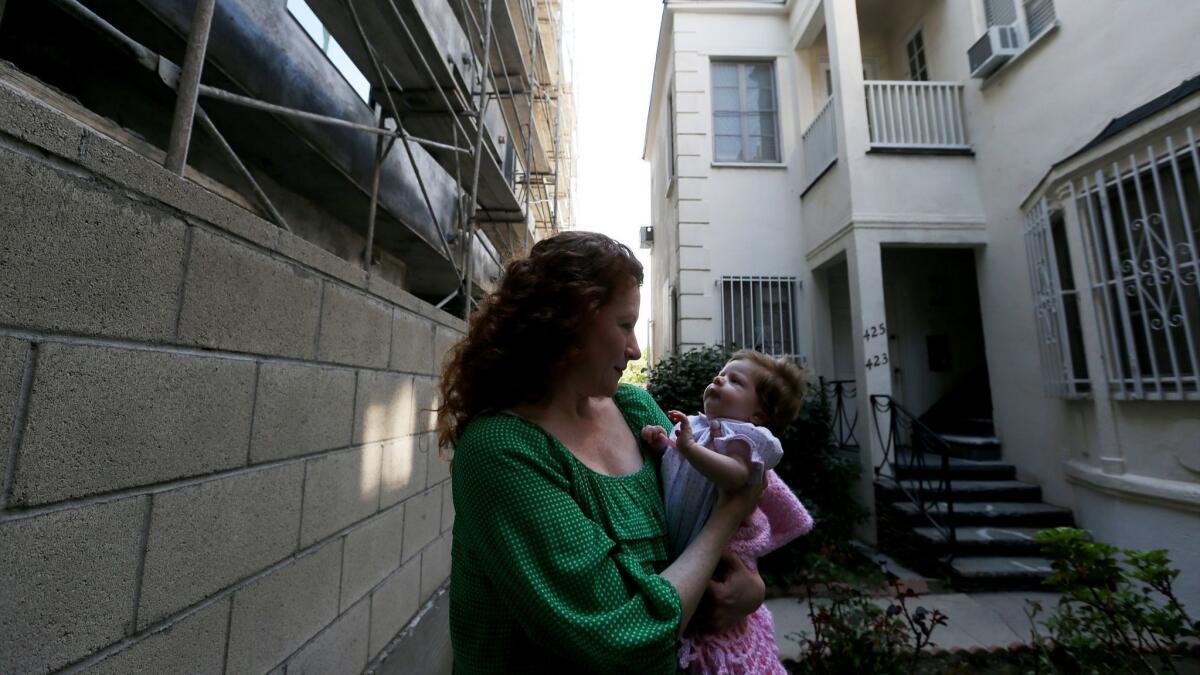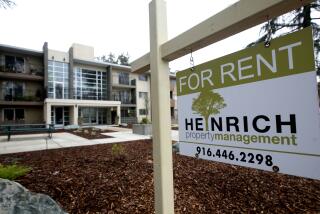Editorial: The defeat of Proposition 10 can’t be the end of the discussion on rent control

Some of the nation’s largest landlords spent handsomely to defeat Proposition 10, which would have allowed California cities to expand their rent control laws. Opponents spent $80 million — three times what proponents spent — to fight the ballot measure, with much of the money coming from large real estate companies with large apartment portfolios in the state. Their campaign was successful.
But the defeat of Proposition 10 can’t be the end of the discussion on rent control. Certainly not if California is serious about addressing the upheaval and suffering caused by rapidly rising rents.
Incoming Gov. Gavin Newsom and the Legislature ought to take on the same issue that Proposition 10 sought to address — how to fairly and effectively ease the existing state restrictions on rent control in order to protect tenants — while also taking steps to encourage new market-rate and affordable-housing units.
Backers of Proposition 10 thought they would find a base of willing supporters. California is in the midst of a housing-affordability crisis. In much of the state, rents have risen much faster than incomes, leading to an epidemic of displacement and homelessness. Nearly one in three households statewide spend more than half of their income on rent, leaving many families just one rent increase or missed paycheck away from eviction.
It won’t be easy to hammer out a grand bargain on rent control, especially after the bruising Proposition 10 battle. But doing so is essential for California.
Proposition 10 would have repealed the Costa-Hawkins Rental Housing Act, a 1995 law that restricted cities’ ability to enact or expand rent control. The initiative wouldn’t have imposed rent control. Rather, it would have allowed cities to adopt whatever tenant protections they felt were necessary, or opt not to do so. That flexibility was a selling point to some Proposition 10 supporters, including The Times editorial board. Each city faces its own challenges and needs the ability to craft its own remedies.
But Proposition 10 was also a blank slate on which opponents were able to project their worst-case scenarios. They asserted that housing construction could grind to a halt; that homeowners would face “price controls” if they wanted to rent out a room in their house; that home values would fall; that seniors would not be able to find affordable housing.
Uncertainty was the death of Proposition 10. But there is still widespread support for some kind of rent control.
The Legislature and Newsom now have an opportunity to amend or repeal Costa-Hawkins to allow cities to enact moderate rent controls, which have been shown to be effective in protecting tenants without hurting housing production. And that should be the goal, because solving California’s housing crisis will require building millions more housing units. Rent control is about providing housing stability, but it must not deter housing construction.
Even some of the most die-hard supporters of rent control agree that extending it to new buildings could deter housing development. One option is to look at “rolling rent control.” Costa-Hawkins bars cities from imposing rent control on apartments built after 1995 — or even earlier in cities that already had rent control in place. Los Angeles, for example, cannot impose rent control on apartments built after 1978. Rolling rent control would slowly expand the number of regulated units by applying rent control to apartment buildings as soon as they turned, say, 20 years old.
Costa-Hawkins also bars rent control on single-family homes, a provision designed to protect mom-and-pop landlords as well as people renting out their second homes. But in recent years, Wall Street investment companies have bought up thousands of foreclosed single-family houses and have become large-scale landlords who, advocates say, have an incentive to keep raising rents. Lawmakers should look at whether to differentiate between mom-and-pop landlords and corporate ones.
Enter the Fray: First takes on the news of the minute from L.A. Times Opinion »
Lastly, Costa-Hawkins mandates “vacancy decontrol,” under which a rent-controlled unit goes to market rate when it is vacated. Whether to do away with this is among the most controversial questions facing lawmakers. Tenant advocates want rents to stay capped even after tenants move out because it ensures that a pool of below-market rental units will remain. However, “vacancy decontrol” is a hallmark of the kind of moderate rent control that research shows doesn’t stymie housing production.
It won’t be easy to hammer out a grand bargain on rent control, especially after the bruising Proposition 10 battle. But doing so is essential for California. Newsom appears to understand the severity of the problem. He opposed Proposition 10, saying it was too broad, but said he would immediately try to get a compromise passed to expand tenant protections.
“If this thing gets defeated, there’s a deal,” Newsom told the Sacramento Bee.
OK, Gov. Newsom — get to it.
Follow the Opinion section on Twitter @latimesopinion and Facebook
More to Read
A cure for the common opinion
Get thought-provoking perspectives with our weekly newsletter.
You may occasionally receive promotional content from the Los Angeles Times.










